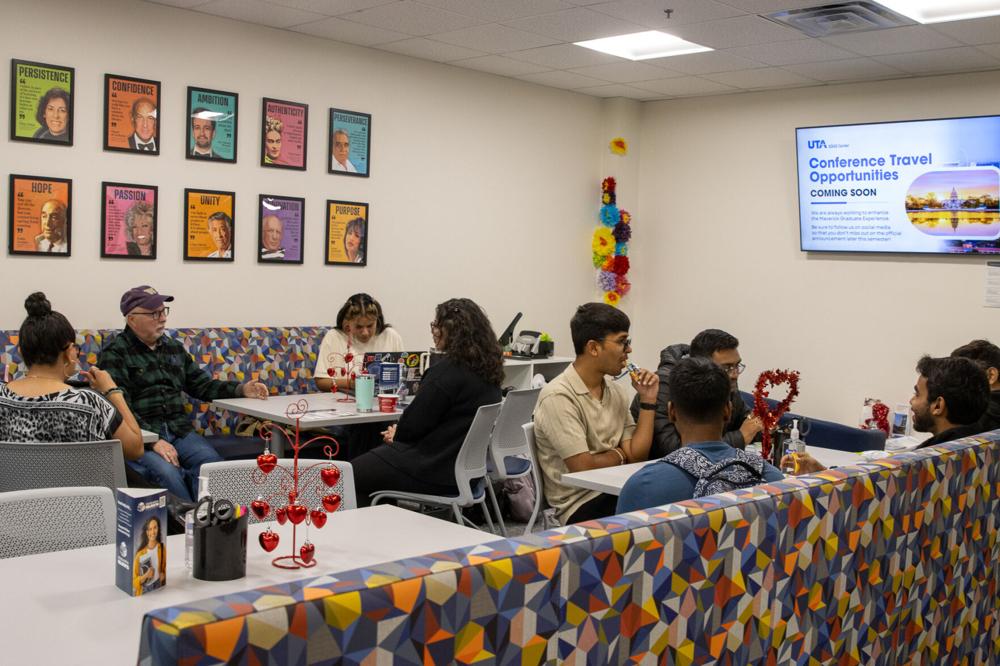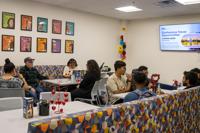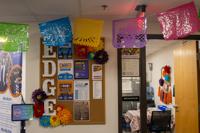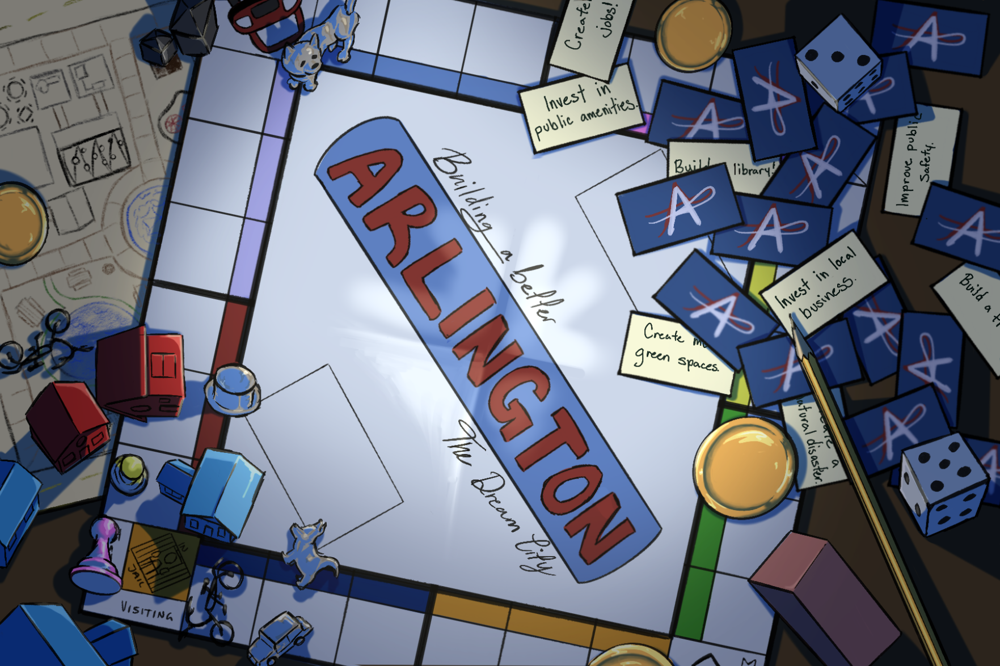
With over 11,000 graduate students in fall 2022 alone, UTA prioritizes providing them with the proper resources to succeed.
Since opening in January of last year, the EDGE Center, or Empowerment, Development and Growth in Education Center, continues to meet that priority. The center aims to foster a balanced experience for graduate students, with programs and resources supporting personal and professional development, social events and community building.
“We just try to create a welcoming environment for all students no matter where they come from, because at the end of the day, what we notice is that graduate students just want somewhere to call home,” career development specialist Catalina Molina said.
The program, funded by a U.S. Department of Education grant, provides five years for the university to pilot and collaborate with campus partners. EDGE is specifically for graduate students, but the center aims to institutionalize itself beyond the period.
The center is designed to meet every need graduate students may face, from a study space and lending libraries to developmental workshops and scholarship opportunities, Molina said.
The center has three main components: academic and personal development, career development and faculty development. All three work in tandem to help bridge gaps graduate students may face, she said.
As a former first-generation graduate student, being able to build a community is something Molina carries with her every day. She said it has been a touching experience to watch the program flourish from scratch.
From the moment students step inside the EDGE Center, they’re welcomed with open arms. Molina said the staff’s energy and kindness keep bringing students back.
With the bond they inevitably create with graduate students, Molina said the center gives them a place to connect naturally in moments with simple conversations.
Graduate students are busy. They have full-time jobs, families, full course loads or everything at once, but they make time to stop by, Molina said.
When students do return, they aren’t the same.
“Every time I meet a student and they leave the EDGE Center, no matter if they’re talking to [staff members] Nancy, Alex, me, our lovely HSI neighbors, our graduate assistants, they come out like a brand new person, and they come back,” she said. “Which is the most incredible part of all, because that’s the whole point of the EDGE Center. We want people to come back.”
EDGE Center director Nancy Zamora said the staff is intentional with each student.
“We’re always celebrating their successes, encouraging them whenever they’re having a difficult time,” she said. “You can right away see students when they’re walking in the door, when they’re stressed, when there’s a lot going on.”
It’s important to celebrate every milestone because that’s how you build community, whether it’s getting a good grade on a test or completing a project, she said.
Mia Garcia, civil engineering graduate student and Latinx Graduate Student Association social media director, has been with the EDGE Center since its inception. She said she often finds herself at the center due to its various offerings.
“Everybody’s super welcoming,” Garcia said. “They always try their best to come out and say hi to whoever walks in. Especially whoever the graduate assistant working that day is.”
She said resources like writing labs and printing are crucial to graduate students, and beyond that, the center is a great space to do any work.
“Anytime I find out someone else is a master’s student, I try to tell them to come here,” Garcia said. “I’m like, ‘You know there’s a place for us where you’re not going to be annoyed by other people. It’s quiet. It’s a safe place, there’s a lot of people who are here to help you, and you can do walk-ins.’”
Before hiring any staff members, a student committee proposed the idea of a new facility. The committee was responsible for writing, submitting and implementing the first stages of the grant. Once completed, the hiring process began.

Zamora was hired first with EDGE Center coordinator Alex Ruiz following soon after. Both come from federal TRIO programs focused on helping students with disabilities and first-generation and low-income families.
“We’re kind of like the Avengers, if you will,” Molina said. “[Zamora’s] like, ‘I’ll take you and I’ll take you.’ And then together, we just hit the ground running once we got here,” she said.
Zamora said the center was up and running within six months of being hired. Since then, it’s been a building process, one step at a time.
“Starting something from scratch, it’s not easy,” she said. “The amount of support that we were able to get from people on campus, it was amazing, getting the word out more and more every single day.”
The center has grown significantly since its opening. From the first month of the spring semester, Zamora said they have served close to 400 graduate students.
The center sends out “need assessments” at the beginning of every year to ensure they’re providing the services students want to see. At the end, they send out an evaluation to get student feedback.
“It’s really great to hear that we are making an impact,” Zamora said. “The most flattering thing that you can get is whenever people start talking about what you’re doing to others and encouraging others to come.”
Going forward, Molina said the next step is to find ways to cement themselves into UTA’s community.
“We not only want to open up the EDGE Center and have it open for five years and help students for five years, we want this to keep on going,” she said. “Now it’s really figuring out ways how we can further integrate ourselves into UTA’s community.”
Running the center is a difficult task, but seeing how much their work means to the students motivates Zamora and her staff to keep going.
“No matter where you are in the world, whether you’ve graduated UTA, the EDGE Center will always be behind you every step of the way,” Molina said. “We take pride in that.”
@PMalkomes















